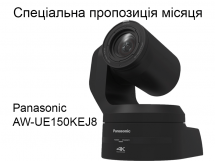| Óêðà¿íñüêà | English | |||||||||||
|
|||||||||||
| News | About company | Service-centre | OB Van/SNG Rental | NextGen Energy Solutions | Contact us |
|
|
Engineering Service, Inc.
» News News If there’s one thing that’s certain in the video industry, it’s that nothing stays the same for long, so providers must also embrace a change in step, writes Deacon Johnson, SVP and GM, MainConcept
Just about every part of the video ecosystem, from how content is produced and delivered to how viewers consume content, is evolving. As demand for content has soared, media companies are under pressure to deliver more streams of high-quality video at lower cost and in less time. This has led to content providers investing in faster and smarter workflows with ad-based content to bolster subscriber growth and revenues. Growing demand for content The surge in consumer demand for premium content has compelled media organisations to enhance workflow efficiency by incorporating automation, cloud frameworks, and by adopting new technologies such as artificial intelligence (AI). However, visual quality remains paramount to consumer experience and thus, media companies must balance visual quality with rising costs. This is a tricky balancing act to get right. Under the hood, codec technology plays a critical role by enhancing media production and delivery efficiency while preserving visual quality when implemented correctly. For example, compressing video content can decrease visual quality each time, while at the same time making a more efficient package. It’s a complex trade-off, which often gets overlooked when analysing user engagement data alone, but choosing the right codec provider from the onset can make a big difference in viewer satisfaction, while also helping to save time and cost in the long run. Changing viewing habits We all know that streaming is continuing to rise in popularity while the number of viewers watching traditional linear TV is falling each year. Traditional TV viewing on broadcast and cable was reported to have fallen below 50 per cent of overall TV usage (reported by Nielson) this year in the US for the first time. There’s no stopping this trend, particularly given the adoption of connected TVs and media devices is widespread. The shift from linear to streaming has been under way for many years so it’s old news, but what is changing rapidly is that viewers are becoming used to ad-based content in addition to SVoD and this trend is global. According to a recent study, 68 per cent of UK consumers prefer to stream free ad-supported content rather than paying for a subscription. As consumers cut back on paid streaming subscriptions, broadcasters have been forced to adapt their business models to increase profitability and grow subscribers. Just about all of the mainstream video providers now include ad-supported content in their offering. Netflix announced that it attracted 15 million active users in the first year of launching its ad-supported plan, which indicates that including ad-based content is also good for business. The story doesn’t end there. After launching ad-funded packages, streaming services are also raising prices of their ad-free plans. At first glance this may seem counterintuitive because consumers are increasingly cutting back on paid streaming subscriptions to save money. Interestingly, it would seem that video providers have realized that ad-supported options open new revenue streams for cost conscious consumers, and also increases the value for premium options at the same time. The path to success To prosper in the new ad-based landscape, video providers will need to focus on delivering a great ad experience that is both personalised and engaging for viewers, but meets advertisers’ goals as well. Developments in ad tech will be a big part of this, enabling ads to be optimised, and allowing advertisers to measure the effectiveness of ads in new and inventive ways. There’s no doubt the move to ad-funded models represents a big change in direction for the largely SVoD-based OTT industry. Yet for consumers, it’s looking like their viewing experience may come full circle The key difference now is that technology will enable ads to be better targeted and more engaging versus traditional advertising. If there’s one thing that’s certain in the video industry, it’s that nothing stays the same for long, so providers must also embrace a change in step. « To the list of news |
|
|||||||||||||||||
 |
+38 (044) 593-18-20 +38 (073) 593-18-20 +38 (096) 532-96-82 +38 (095) 532-96-82 Service center Telegram @Engineer_Service |

|
|
|||||
 |
e-mail: engineer-service.tv 15 Vavylovykh str., Kiev, 04060, Ukraine Authorized service centre of Panasonic, Sony, JVC, Fujinon, Canon |
|||||||







